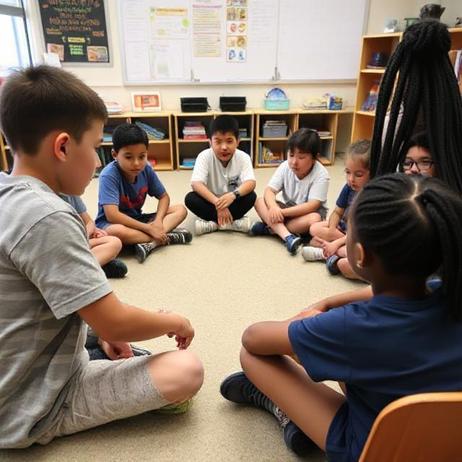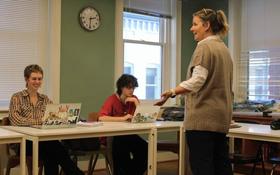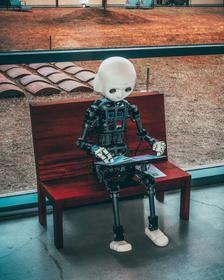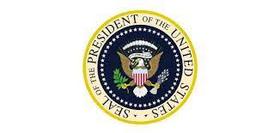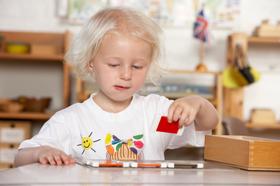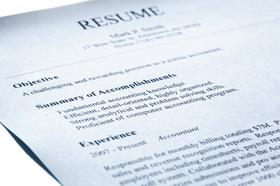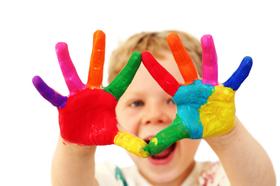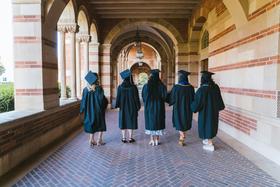Social Emotional Learning: Education’s Hidden Symphony (2025 Edition)
In the symphony of modern education, social-emotional learning (SEL) is often the softest yet most essential movement—a vibration underpinning academic skills, social competence, and lifelong resilience. Originally popularized in the early 2000s, SEL has matured considerably by 2025, as schools, researchers, and policymakers grapple with accelerating mental health needs, equity demands, and the pressure to do more than “teach content.” This review updates the landscape of SEL—its reach, evidence base, challenges, and future prospects—for parents, educators, and school leaders seeking a deeper understanding of this hidden but indispensable force.
1. The New Reach of SEL: How Far Has It Spread?
The diffusion of SEL in U.S. schools has advanced steadily. In the 2023–24 school year, 83 percent of principals reported that their schools used an SEL curriculum or program, up from 76 percent in 2021–22 and far above the 46 percent reported in 2017–18. This growth appears resilient, even as SEL becomes politically contentious in some districts.
Meanwhile, the global SEL market is booming. Projections suggest it will grow from approximately USD 3.13 billion in 2024 to USD 3.9 billion in 2025, marking a compound annual growth rate (CAGR) of 24.5 percent. Another estimate pegs the 2025 market at USD 9.25 billion, illustrating the wide variance in methodologies but underscoring strong demand.
Across the globe, SEL is becoming standard in education policy discussions. The OECD’s 2023 Survey on Social and Emotional Skills (SSES) explored how skills like empathy, persistence, and curiosity vary among students aged 10 and 15, linking these competencies to later-life outcomes.
In the U.S., more than half of states now embed SEL or social-emotional standards into K–12 policy frameworks, though adoption remains uneven.
2. Evidence & Impact: What the Research Now Says
After nearly two decades of SEL intervention research, the outcomes remain strong—and in some domains, even more compelling in 2025:
A large-scale synthesis of SEL program research reveals that students who participate show an average gain of 11 percentage points in academic achievement relative to control groups.
SEL interventions are also linked to reductions in risky behaviors, improved attendance, and greater classroom engagement. casel.org+1
Importantly, more research is focusing on durability—whether SEL effects last years beyond the intervention. CASEL’s 2025 “State of the SEL Field” report emphasizes that high-quality SEL, when integrated into school ethos and reinforced over time, can yield lasting social-emotional “muscle.” casel.org
Digital and hybrid SEL platforms (apps, virtual coaching, micro-modules) are emerging as viable supplements—especially in remote or hybrid settings.
However, effect sizes vary: simple, decontextualized SEL lessons often underperform, whereas embedded, schoolwide,> perform best.
In short: SEL works, but success depends heavily on fidelity, coherence, and context.
3. Why Now? The 2025 Imperative for SEL
Several contextual currents in 2025 make SEL not just desirable but increasingly indispensable:
A. Heightened mental health needs
Recent K–12 data show that nearly 40 percent of high school students report persistent feelings of sadness or hopelessness; 20 percent seriously considered suicide; and almost 10 percent attempted it. K-12 Dive In this climate, SEL becomes a core strategy—not a “soft add-on”—for prevention, coping, and early support.
B. Political and cultural headwinds
SEL has become a flashpoint in some districts, with critics arguing it intrudes on values or de-emphasizes academics. Some schools now rebrand SEL as “character education,” “well-being instruction,” or “life skills” to reduce controversy. The substance remains similar, but nomenclature helps avoid unnecessary backlash. (For example, some districts now avoid the explicit “SEL” label but maintain frameworks.)
C. Integration with equity, trauma, and restorative practices
Increasingly, SEL is woven into equity and trauma-informed initiatives. Schools are aligning SEL with restorative justice practices, culturally responsive pedagogy, and anti-racist frameworks so that social-emotional development doesn’t remain compartmentalized.
D. Policy levers and funding shifts
New federal and state incentives increasingly support well-being and social-emotional infrastructure. For example, a recent school choice law includes tax credits for expenses tied to both academic and well-being supports. K-12 Dive Meanwhile, 30 states have introduced more than 114 bills in 2025 affecting private school choice or funding—a shift affecting both public and independent schools. The Journalist's Resource
4. SEL in Independent & Boarding Schools: Progress and Pitfalls
On the independent/boarding side, SEL is often more explicitly integrated into mission statements, student life, and culture-building. But even here, transitions in 2025 highlight new challenges and innovations:
Tuition pressures and cost justifications: As private school tuition continues to climb, SEL is being positioned as a value-add. In 2025, average day school tuition has reportedly surged past USD 49,284, while boarding school tuition now hovers near USD 73,080, up from smaller increases in prior years. Bloomberg Schools argue that investing in student well-being justifies such costs, but families understandably now expect robust SEL offerings and measurable outcomes.
Measuring social-emotional “return”: Independent schools are investing in longitudinal tracking (e.g. alumni outcomes in leadership, civic engagement, college persistence) to demonstrate ROI on SEL. Some elite boarding schools now publish student wellness dashboards or social-emotional growth metrics in annual reports.
Student-led SEL practices: Many boarding schools involve students directly—peer mentorship, social-emotional task forces, restorative circles, and “well-being ambassadors.” These amplify agency and reinforce SEL as a lived experience, not just a curriculum.
Competition for SEL credentials: A few institutions now require faculty to hold SEL or restorative practice certifications. Others incorporate SEL competencies into performance reviews or professional learning goals.
Despite momentum, pitfalls remain: disjointed SEL programs, overreliance on single-period lessons, and “SEL fatigue” among students when too many curricular demands compete for time. The most successful programs avoid these by integrating SEL into daily routines, classroom norms, and advisory structures.
5. Keys for Schools That Want the SEL Symphony to Resonate
Below are guiding principles drawn from 2025 research, practitioner wisdom, and real-world models:
| Principle | What It Means in Practice | Example |
|---|---|---|
| Embed, don’t bolt-on | SEL should be woven into academic lessons, advisory, student culture, and staff planning—not treated as an isolated class. | A math teacher integrates growth-mindset talk into problem-solving routines. |
| Use real-time data & feedback | Regular social-emotional “temperature checks” (pulse surveys, focus groups) help adjust pacing, scope, and support. | A school uses digital SEL surveys every 6 weeks to tailor interventions. |
| Sustain professional learning | One-off training isn’t enough. Staff need coaching, observation cycles, and collaborative planning time. | SEL coaches co-teach lessons and hold micro-cycles of observation. |
| Student voice and co-design | Students should influence SEL priorities, norms, and structures—not just receive them. | A “student SEL council” leads community-building events and pulse-check reviews. |
| Equity and cultural calibration | SEL should be responsive to students’ cultural backgrounds, trauma histories, and systemic challenges. | Restorative circles are adapted to reflect cultural norms around apology and repair. |
| Plan for resilience post-pandemic | Schools should anticipate backsliding and build cycles of re-engagement, especially after transitions (e.g. summer, grade-level entry). | Refresher circles at the start of each term re-anchor norms and connection. |
One compelling case: A mid-sized boarding school in the Pacific Northwest introduced a four-year advisory curriculum explicitly aligned with SEL competencies. After two cohorts, the school saw 25 percent fewer disciplinary referrals, 15 percent higher attendance, and better student reflections on belonging. (Internal data, 2024–2025 cycle.)
6. Challenges and Cautions in 2025
Even as SEL gains traction, schools must remain alert to the following:
Overpromise and underdelivery: Some districts adopt trendy SEL frameworks without capacity, leading to skepticism and pushback. Sustained fidelity matters more than flashy adoption.
Political backlash and ambiguity: As noted, some communities reject the label “SEL.” Schools may need to reframe language or emphasize overlapping priorities like well-being, character development, or life skills.
Equity gaps in access: Underfunded districts may struggle to support SEL coaching or integration. Without careful design, SEL can deepen inequities if only some students receive robust support.
Burnout and “SEL fatigue”: Students and teachers already stretched may resist additional programming—especially if SEL feels disconnected from their priorities.
Measurement and causality limits: While SEL effectiveness is well documented, isolating SEL’s causal impact in real school settings remains tricky. Schools must interpret data carefully.
7. The Future Crescendo: SEL in 2030 and Beyond
Looking ahead, several trajectories are emerging:
Hybrid-augmented SEL: AI-driven micro-modules, adaptive emotional coaching, and VR-based role-play simulations will become more common.
Skills certification and credentialing: Students may graduate with translatable portfolios of social-emotional competencies alongside grades.
Integration into early childhood and postsecondary: SEL is expanding into preschool and college-first-year programs, aiming for coherence across life stages.
Global comparatives and benchmarking: Countries increasingly benchmark students’ social-emotional skills—comparing persistence, empathy, self-regulation via tools like OECD’s SSES. OECD+1
Policy mandates and accountability: Some states may require SEL benchmarks alongside academic measures. Schools that ignore well-being risk falling behind in accountability systems.
8. Final Thoughts for Parents, Educators, and School Leaders
If the first era of SEL was about introducing social-emotional frameworks into schools, 2025 marks a pivot: from adoption to integration, refinement, and sustainability. SEL is no longer an optional add-on—it is the quiet conductor guiding student thriving, engagement, and equity.
For parents, engage schools in conversations about how SEL is meaningfully woven into daily life—not relegated to periodic lessons. Ask to see student reflections, well-being data, or advisory structures, and look for evidence that SEL is lived, not perfunctory.
For educators and school leaders, resist flashy programs lacking coherence. Start small, align SEL with school culture, prioritize coach-led models, and invest in ongoing professional learning. Let the student voice guide iteration.
And for independent and boarding schools, SEL offers a unique differentiator—but one that must be realized through measurable outcomes, student leadership, and cultural alignment—not merely asserted in brochures.
In the symphony of learning, SEL is not an optional overture—it is the hidden harmony that amplifies every note of knowledge, character, and community.

